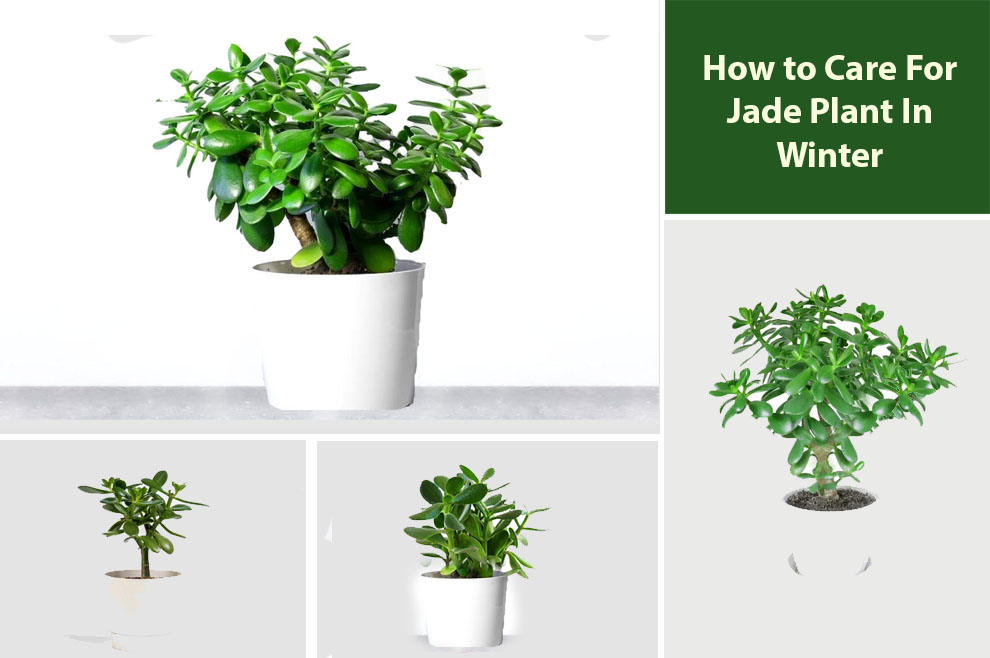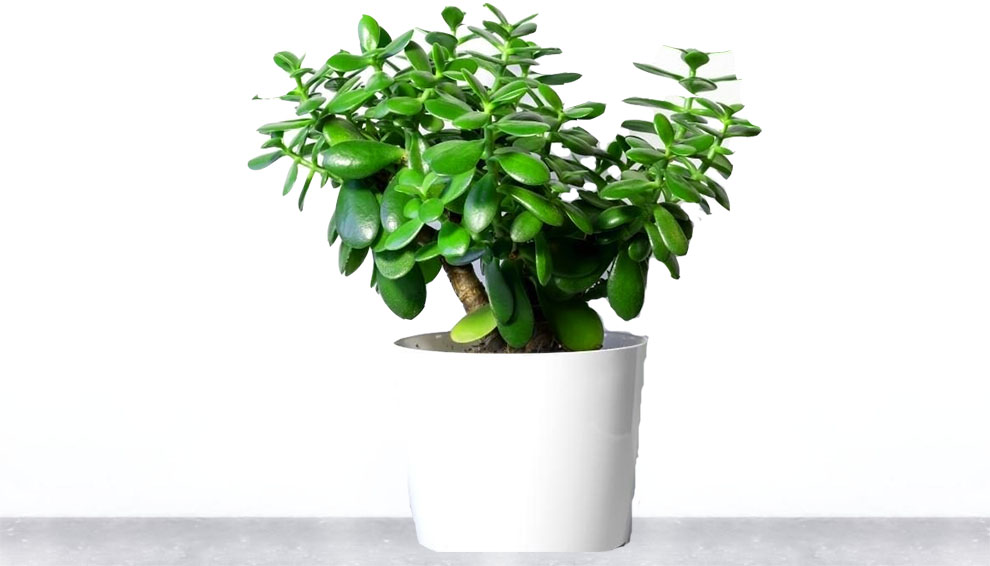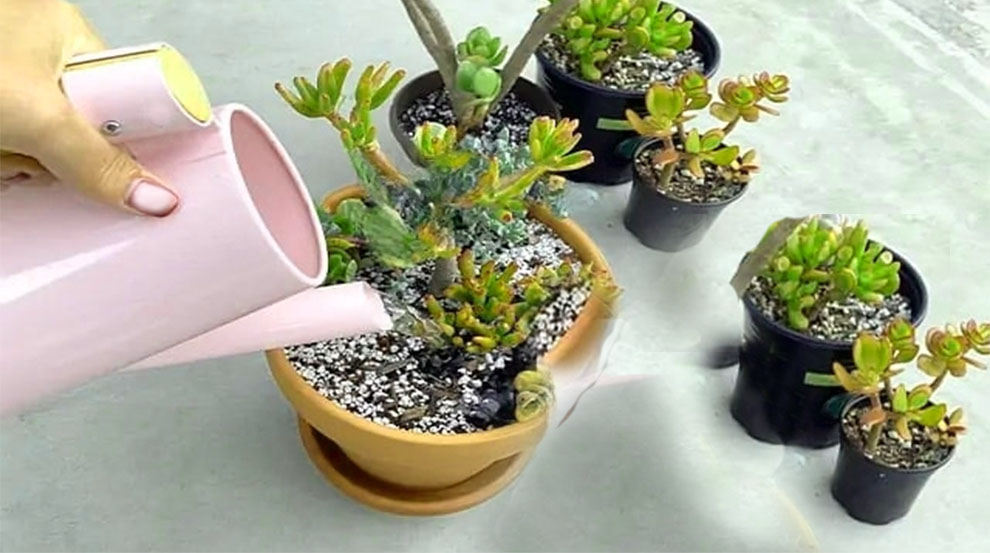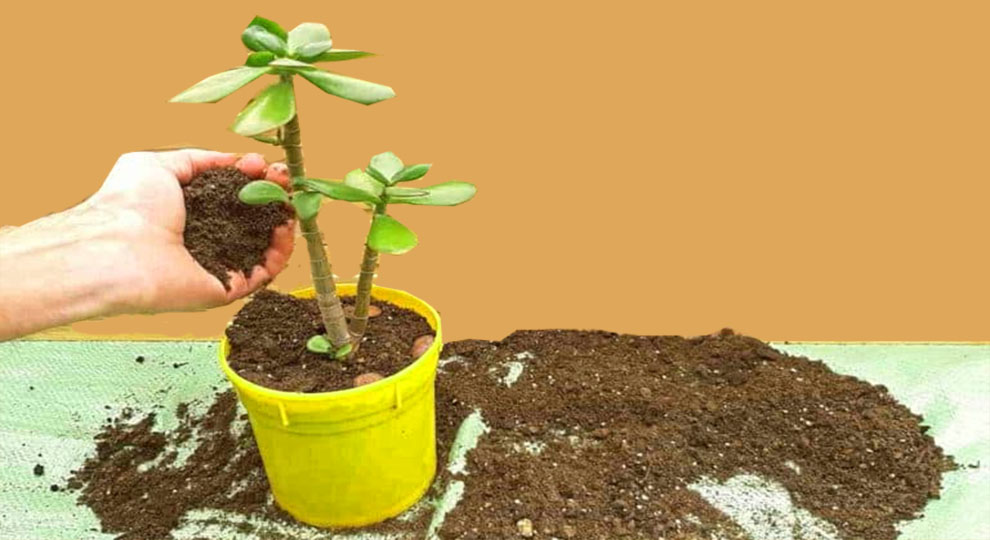Jade Plant Care in Winter: Nurturing Resilience and Growth
During winter, care for jade plants by reducing watering, placing them in bright but indirect light, and avoiding repotting. Accept natural leaf shedding as they go dormant during this time.

Jade plants (Crassula ovata), with their thick, succulent leaves and captivating appearance, are popular choices for both indoor and outdoor plant enthusiasts.
These hardy succulents, often referred to as “money plants” or “lucky plants,” are known for their ability to thrive in various conditions.
However, as winter approaches, doing the right jade plant care in winter becomes crucial to ensure the continued well-being of your plant.
Basically, in winter, care for indoor jade plants by placing them near bright, indirect light. Water infrequently, ensuring soil dries between waterings.
Maintain temperatures around 50-65°F (10-18°C), and avoid over-fertilization. Prune as needed, watch for pests, and embrace the plant’s natural leaf shedding and slowed growth during this period.
In this comprehensive guide, we’ll explore the essential steps and strategies for caring for your jade plant during the winter months in greater detail. It will help you make it thrive and maintain its vibrant charm.
Jade Plant: A Brief Overview
Before we delve into winter care specifics, let’s take a moment to understand the jade plant varieties’ natural characteristics.
Native to South Africa, jade plants have adapted to thrive in arid environments. Their fleshy leaves store water, making them part of the succulent family.
Their popularity as indoor plants is due to their resilience and low-maintenance requirements.
How To Take Care of Jade Plants In Winter

As soon as the temperature drops and winter sets in, you need to make the following changes in your jade plant care routine:
1. Adjusting Light and Temperature – Knowing Do Jade Plants Need Sun In Winter
As winter brings shorter days and decreased sunlight, it’s important to make adjustments to your jade plant’s light exposure.
Position it near a south-facing window to maximize sunlight. If natural light is limited, supplement with a grow light to ensure adequate illumination.
Temperature fluctuations can stress jade plants. Maintain a consistent indoor temperature between 50°F to 75°F (10°C to 24°C).
Avoid placing your plant near drafts or heating vents, which can cause temperature extremes.
2. Understanding How Often Should You Water Jade Plants In The Winter?

During winter, your jade plant’s watering needs change. With reduced sunlight, the plant’s growth rate decreases, leading to slower water consumption.
Allow the top layer of soil about inch (2.5 cm) to dry out between waterings. Overwatering can lead to root rot, a common issue in winter when the plant’s water absorption is reduced.
3. Humidity Considerations
Jade plants are adapted to arid conditions and do not require high humidity. Indoor heating during winter can decrease humidity levels, potentially affecting your plant.
To counteract this, occasionally mist the plant or place a shallow tray of water near it. However, ensure the plant’s leaves do not become excessively wet, as this can lead to fungal issues.
4. Should You Prune Jade Plants In Winter?
Winter is an opportune time for light pruning and maintenance. Remove any dead or unhealthy leaves, as well as any leggy growth.
This promotes a more compact and aesthetically pleasing shape. Be sure to use clean, sharp pruning tools to prevent damage to the plant.
5. Limit Fertilization – How To Use Fertilizer For Jade Plant In Winter?
Jade plants have minimal growth during winter, so reduce or suspend fertilization.
Too much fertilizer can lead to excessive growth that the plant cannot sustain in low-light conditions.
Wait until spring to resume regular fertilization, using a balanced, diluted fertilizer.
Here is more for you: Detailed Fertilizer Guide for Jade Plants
6. Jade Plant Care In Winter For Pest Prevention and Control
Winter is a time when certain pests, like mealybugs and spider mites, can become more problematic due to the dry indoor conditions.
Regularly inspect your jade plant for signs of infestation, such as white webbing or tiny insects.
If pests are detected, isolate the plant and treat it with appropriate measures, such as using neem oil or a gentle insecticidal soap.
7. Monitoring Growth and Health
Keep a watchful eye on your jade plant’s overall health and growth during the winter months.
While the growth rate might slow down, continue to monitor for any signs of stress, disease, or pests. Prompt intervention can prevent issues from escalating.
8. Does Jade Plant Losing Its Leaves In Winter Normal?
Yes, it’s normal for jade plants to lose some leaves during the winter months. Jade plants are succulents, and they naturally undergo a period of dormancy in the winter.
During this time, they might shed some leaves as part of their natural growth cycle. This is usually nothing to worry about, as long as the plant is still healthy overall.
Just make sure not to overwater it during the dormant period, as succulents are more prone to root rot when the soil is too damp.
9. Repotting Jade Plant In Winter – Yes Or No?

Repotting a jade plant in winter is generally not recommended unless it’s absolutely necessary.
The plant is in a dormant phase, and disturbing its roots can cause stress. If the current pot is too small or the plant’s roots are visibly overcrowded, repotting might be considered.
However, it’s better to wait until spring when the plant is actively growing.
Focus on providing minimal care during winter, as repotting can be disruptive and potentially harmful to the plant’s health during this resting period.
Related: How to propagate jade plants in water?
10. Transitioning Jade Plants to Spring
As winter subsides and daylight increases, your jade plant will naturally respond with new growth.
With the arrival of spring, gradually reintroduce the plant to brighter light. You can also start increasing watering frequency as the plant’s growth picks up pace.
How To Care for Jade Plant In Winter Outdoor?
During outdoor winter care for jade plants, choose a well-draining location with sunlight exposure.
When temperatures drop near freezing, provide protection like frost cloth. Water sparingly to prevent root rot, as the plant’s water needs decrease in cooler months.
Mulch around the plant to insulate the roots. Prune any frost-damaged or unhealthy growth in late winter. Minimize fertilizer application and be cautious of excessive moisture.
Jade plants might naturally shed some leaves due to the cold. Monitoring for pests and adjusting care to the local climate ensures your outdoor jade plant’s health through winter.
Jade Plants Winter Nurturing for a Year-Round Beauty
Jade plants have a long lifespan. Caring for your jade plant during the winter months requires a thoughtful approach that acknowledges its natural adaptations.
By adjusting light, temperature, watering routine, and maintenance practices, you can ensure that your jade plant maintains its resilience and vitality throughout the colder season.
Remember that the key to successful jade plant winter care lies in understanding your plant’s needs and providing the right conditions for it to thrive.
With your nurturing touch, your jade plant will continue to be a source of beauty and joy, adding a touch of green even during the frostiest months of the year.
